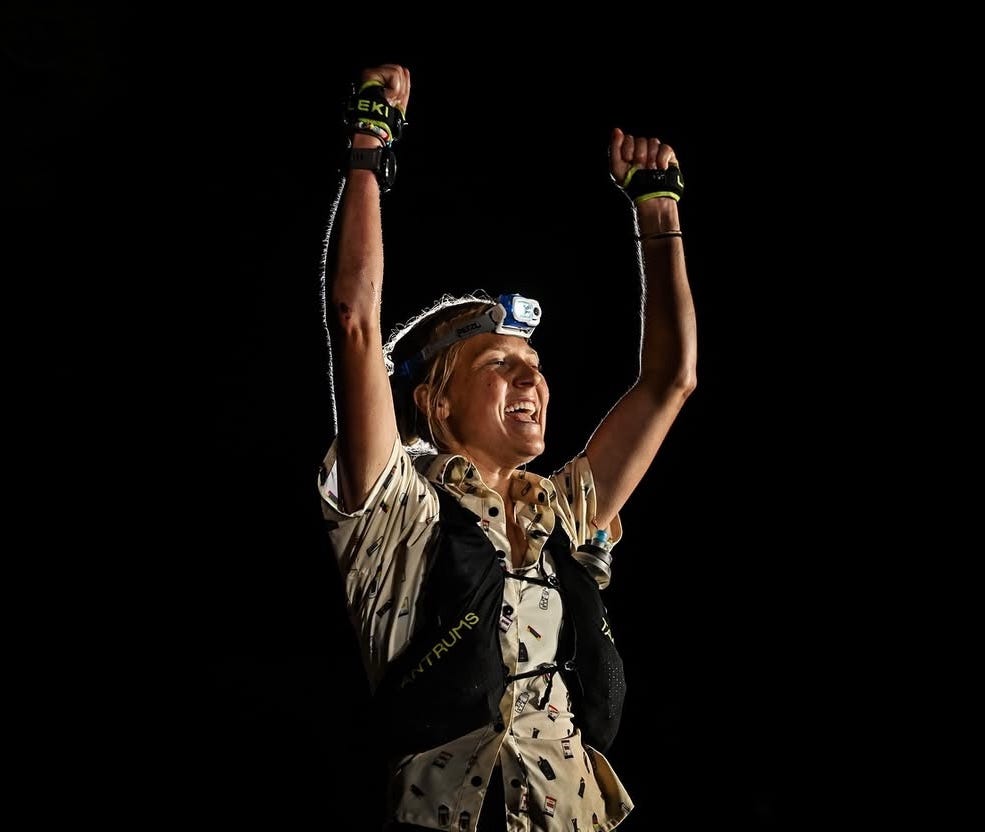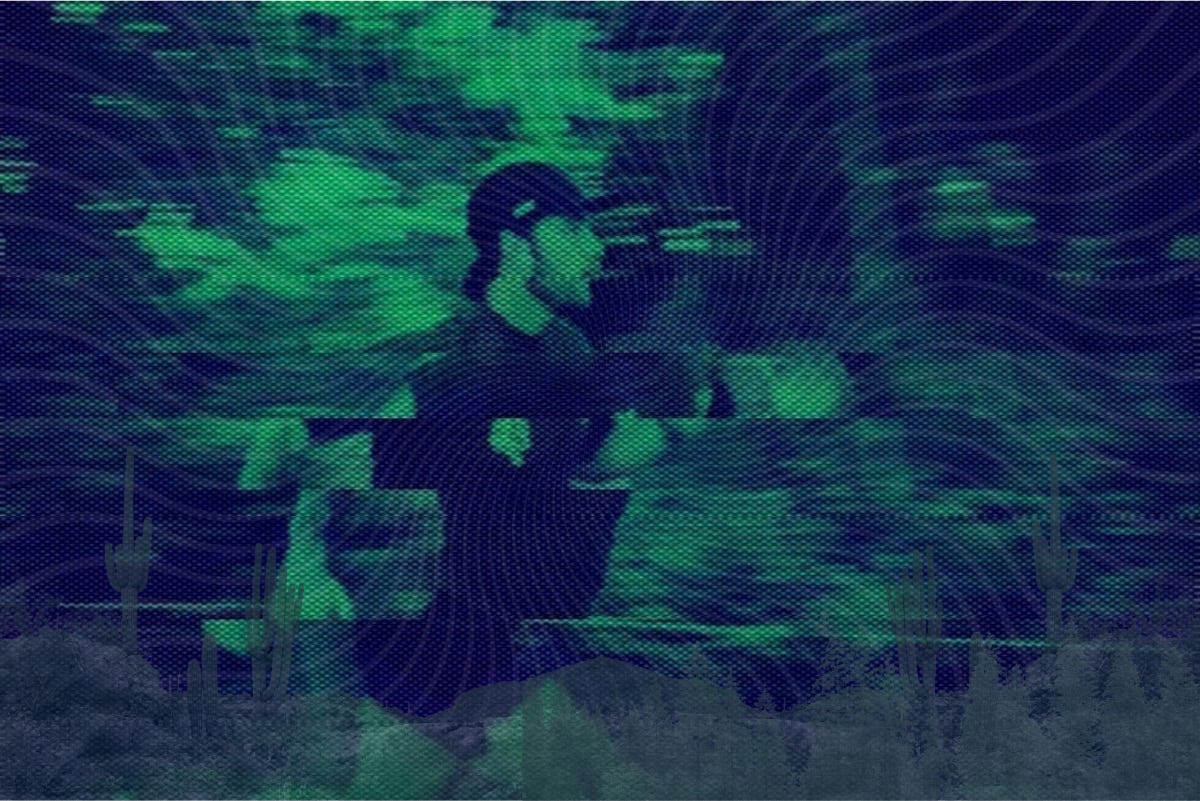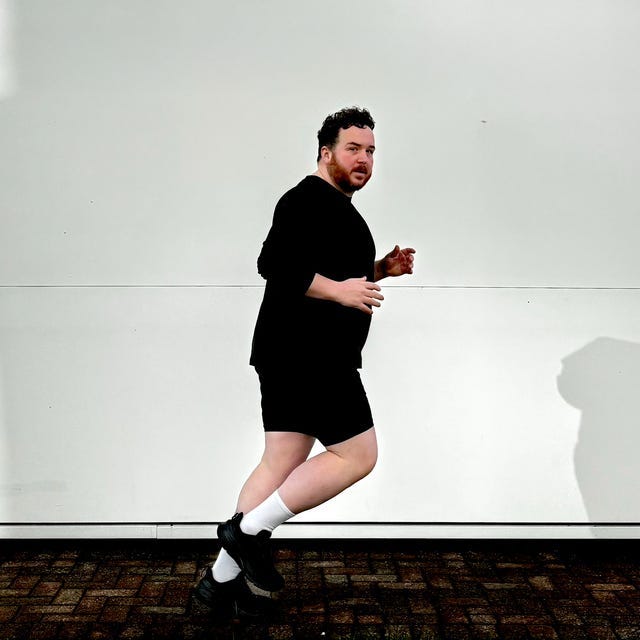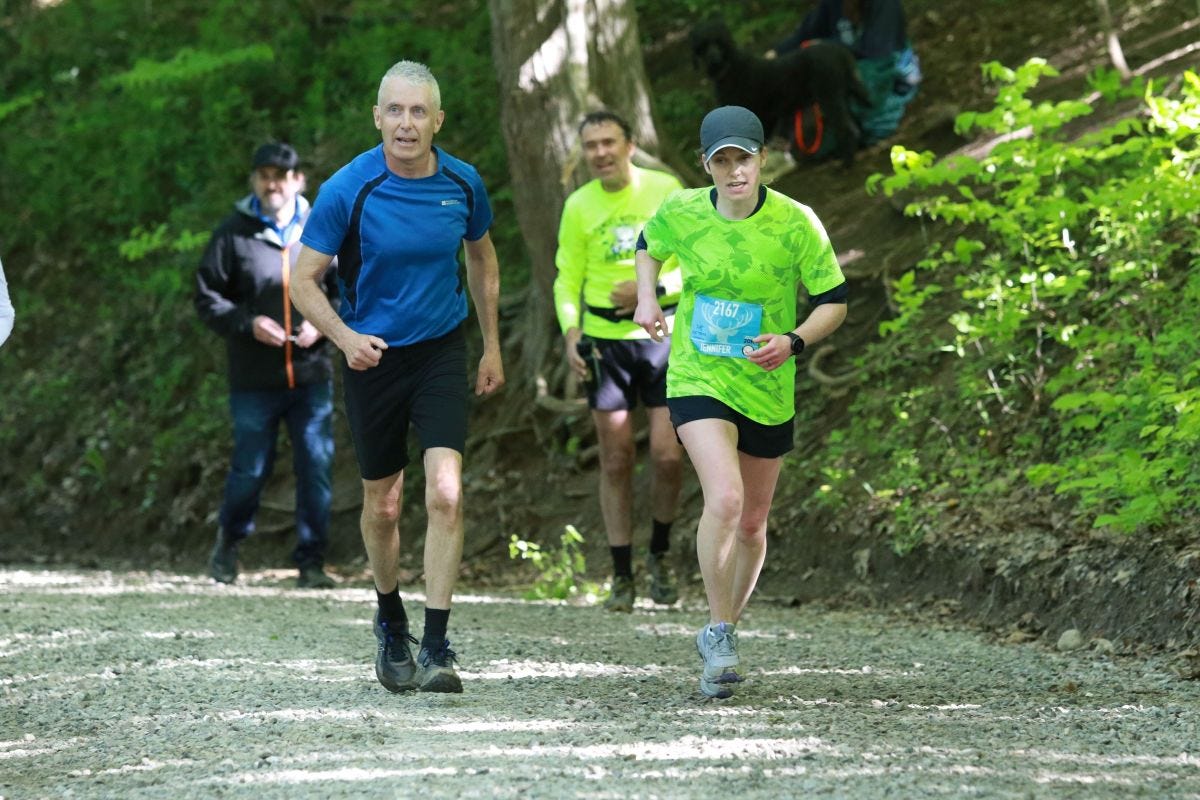Heya and welcome back to Five Things Running!
This week was the last week of school for our two youngest daughters, so for the first three days I still had my usual morning routine, made breakfast for them and pushed them out of the door, then went with the dog and then went for a 10 km run around the Alster, as I usually do. On Thursday, school was out and I stayed in bed a bit longer and then all of a sudden I realized that running was not possible due to a videocall at 10. Same on Friday. And on Saturday it didn’t feel right when I started running, so I stopped, went home. On Sunday I finally wanted to go running again and of course it rained cats and dogs… As our youngest daughter now joined a cheerleading squad in another part of town, I always have to take her there and as it doesn’t make much sense to drive back home after dropping her off, just to spend 30 mins at home before I have to drive back to get her, I usually spend the time running. We just learned that our daughter will compete at the European Championships next June, which is just totally crazy. She’s 10 years old! Anyhow, I got a nice long run in on Sunday and I keep exploring this other part of town, which is kind of fun. I always try to run near water, it’s my thing.
Also, another thing I noticed this week was my Strava Fitness graph. I love Strava, but I think the way they use data is a bit sub-complex, to put it mildly. How can I be 10 points higher on my fitness scale than I was a year ago when I ran a 50 km race and weighted 10 kg less? I’m slow af right now, my pulse is higher and I run a lot less compared to a year ago. Granted, I had a few weeks where I didn’t run at all and now everything is getting better and I am getting back into shape, but when I look at the graph I think Strava has been drinking. Or changed the way they interpret data a while ago. Bizarre.
Here’s this week’s Five Things Running!
Has Cowboy Core infiltrated running?
We know about trail running’s exponential rise in the same timeframe, with the race locations largely in the American High Country, and the belt buckle trophies. During the latest boom, urban runners have taken to wearing a bandana around their necks, and are reverting from high-tech polyester to retro cotton t-shirts, for instance. It’s a chicken-and-egg situation as to whether cowboy culture has infiltrated running, or the other way around
Yeehaw! I love it. It’s so much better than all the neon outfits that too many runners are still wearing.
“So, how’d I do?” – High Lonesome 100
High Lonesome is self-described as being “one hell of a course” via the website, and I have to agree. Nearly 24,000 feet of climbing, combined with an average elevation over 10k (and peaking at a little over 13k), it’s stout. Honestly, the course reminded me in some ways (difficulty, technicality, climbing, and fun aid stations) of Crazy Mountain, but without the oxygen, because who needs it. Fuck your oxygen.
A while ago I listened to a podcast and somebody described how he (or she? cannot remember) picked High Lonesome for the first 100 miler ever. That race sounds scary, especially when you live at sea-level like do. Kudos to Rachel Entrekin for winning this beast! I do think more races should be sponsored by whiskey brands!
Trail Running's Coaching Gap: A Multi-Billion Dollar Market Hiding in Plain Sight
Fewer than 3 in 10 U.S. trail runners work with a coach.
That’s striking in a sport full of athletes who obsess over mileage, race logistics, and grams of carbs per hour.
The State of Trail Running Report report pegs the U.S. market coaching and training services market could be worth up to $1.2B as of 2024, with the worldwide market some multiple of that (no worldwide coaching market estimates available).
And this market is also growing.
The trail running market is growing and the demand for coaching will grow as well, but I assume it will be different compared to road or track racing, as trail running is more individualistic, methinks.
A conversation about running and fatness
‘We live in a deeply fat-phobic society and when you're exercising in public it's a very visible thing. When you're running as a fat person, you're only ever considered to be amateur or in transition – you're doing it because you're deeply ashamed of who you are and it's therefore the public's right to shout things at you on the street. I think a lot of women runners can also relate to how being in public and moving gives agency for people to shout things. It felt like a very frightening thing to do, so doing it in a gym on a treadmill felt easier, because I could go at 11 o'clock and be surrounded by other folk who were a bit like me, and be less intimidated by that space. Then before I knew it I thought, I'm actually really good at this!. And I moved house and my only option was to run on a canal and that was the first time I did a wild run – and it was okay. Again, I created these environments where it could feel safe, but now I just run whenever. That doesn't mean people don't shout things, but I bought more expensive headphones and now I don't care.’
The reason why I shop online is that a guy in a store frankly told me: “that shoe is not for a runner like you.” - he was probably right, but the way he said it was deeply discouraging for me at the start of my weight-loss endeavor. We still have ways to go to accept different body types in this sport.
Ultrarunning as A Vehicle for Exploration: A Data Driven Look at the Habits of Ultrarunners
For me, the pleasant surprise in this analysis was seeing how many runners explore trails within their home province or region with the occasional ultramarathon. It was a welcome counterweight to the FOMO and upward social comparison often facilitated by social media. For example, did it feel to you like everyone was at the Western States 100 this year? Well, most runners in my sample dataset have never raced in the U.S. and 75% of these runners haven’t completed a 100 miler.
I find this kind of data fascinating. And I have to admit that I have never run Western States 100 myself, but when you look at the media coverage, you get massive FOMO. And no, I won’t be at UTMB either, even though it is on my continent…
Thanks to COROS for supporting this publication!
If you want to sponsor Five Things Running and reach out to a fantastic audience of more than 2200 runners every week, please reach out!
If you missed last week’s edition, you can read it here:
Now, go running!
— Nico
🏃🏻♂️









Agreed on Strava's fitness score. It seems almost tailor made to increase injury risk. I only see it go up after hard efforts, regardless of how consistent you are with base training. And it plummets after any extended period of rest, which I think leads to the inconsistency over long time horizons that you describe.
I'm telling you neon polyester is coming back this year!